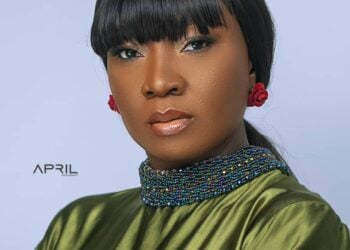“It’s poverty that makes people reject plastic surgery,” said a former housemate of Big Brother Nigeria ‘with her full chest’.
Plastic surgery in general, and BBL (Brazilian b*tt Lift) in particular, has become very common amongst Nigerian women (both young and not-so-young) in recent times. The BBL, in particular, which involves the surgeon removing fat from other areas of the body and then proceeding to re-introduce it in the lady’s derriere, has become all the rage as the trend of the ‘coke bottle body shape’ has been prevailing in recent times. Ladies go to great lengths to acquire their dream bodies. In fact, I recently came across the story of a lady in Nigeria who implored her friend for financial assistance to the tune of a few millions for her alleged ailing mother, only for her friend to discover that the money was utilised for a BBL procedure. In Western countries, women of all ages are also incurring debts to undergo cosmetic surgery.
Nowadays, many might argue that women no longer merely pine for expensive objects such as bags and shoes: their bodies are now also considered in the list of ‘things to upgrade’ in the level up journey that appears to be obligatory. ‘Levelling up’ is another new concept that has caught fire in our society. ‘To level up’ means to evolve and change until you become the ‘best version of you’. In this almighty levelling up quest, eating right and exercising no longer suffice as it appears one must undergo more tasking procedures to attain the ‘barbie like’ proportions. The modern version of the levelled-up woman, which is being sold to the modern woman, involves not only a range of expensive material goods, but also the right body shape to go with it.
However, if we analyse the motivation behind Nigerian women, as well as women world-wide, pushing them to such lengths, with both the financial and physical implications that come with it, we cannot ignore hypergamy as a factor.
Hypergamy is defined as ‘the action of marrying or forming a sexual relationship with a person of superior sociological or educational background’.
Hypergamy has always been a reality of women throughout history and amongst every race or society of the world. Women with specific attributes have always stood to gain either by monetizing their bodies in a blatantly commercial way, or by ‘marrying up’. Hence, women across the world have historically always invested heavily into the beautification of their faces and bodies. From make-up, to corsets, to fashionable outfits, tribal marks and hours spent making elaborate hairstyles, no female culture, society or social class has been exempt from this race ingrained in women by Mother Nature. Not strangely, the first richest African-American woman became a millionaire by selling hair products for women.
Hence, one can see how ‘doing your body’ may be deemed as an investment by the modern woman who seeks to reap the returns on their investments. This willingness to pay for the upgrade of their physical attributes is arguably not any different from how an entrepreneur would invest in their business with expectations of yielding returns.
The trend of using plastic surgery to enhance the female body commenced not too long ago in the Western world with women enhancing their chests in the 1980s. Lip enhancement and chest enhancements commenced in the late 80s and grew more popular in the 1990s, with Hollywood celebrities leading the way. In recent times, women undergo a wider range of treatments, from botox to tackle wrinkles; to teeth, veneers for perfect dentition; to liposuction for flatter stomachs, trimmer arms and thighs and BBL for a more prosperous derriere: the final result is a barbie-like look with a curvaceous body and a perfectly flat tummy.
Historically, the African woman has been known for her naturally curvaceous body. In fact, many claim that this current trend of the ‘figure eight body’ stems from the fetishisation of the black female body by other cultures. Amongst some West African tribes, the love for the curvaceous body was taken to extremes such as amongst the Kalabari of Rivers State, and the Efik and Ibibios of Cross Rivers and Akwa Ibom states in Nigeria. In fact, amongst these tribes, a young girl coming of age would be required to undergo a period of ‘fattening’ in order to attain a high value husband. For this purpose, her parents would pay for her to be kept in the fattening room, where the purpose was for her to be fed until fattened to satisfaction as well as to undergo beauty treatments. Being able to send a daughter to a fattening room was a testament to the fact that she came from a well-to-do background. The fatter she became, the more beautiful she was considered and the better her chances of getting the best men in her society. At the end of her stay at the fattening house, she would be ceremoniously revealed to the community and potential suitors would be invited to see her dance. Once again, we can see a correlation between the financial status and the ability to afford to undergo expensive beautification treatments. Not only that; for the men of these societies, marrying a fat woman was also a reflection of their status and wealth.
This fattening process arguably speaks to hypergamy: clearly, there is a thread whereby the physical shape of a woman and her financial background determined her success in life amongst some African tribes. Would it then be fair to say that such statement as the one made by our former Big Brother housemate – and which many would condemn as a superficial, slay queen, generation Z statement – isn’t but a modern-day version of the fattening room as a means for female hypergamy or success? Does the condemnation of such statement speak to a short memory of some of our cultural values and a denial of the fact that the female gender has naturally participated in hypergamy across cultures worldwide? So perhaps, wouldn’t it be fair to argue that there is nothing new in an African woman placing so much emphasis and value on the importance of looking a certain way?
Various tribes had various beautification processes and many of them came with health risks. Amongst Igbo women, beautification involved sharpening/filing of the teeth, long complex hair manipulations and decorative tribal marks, amongst others. The filing of teeth closely reminds me of the process involved in attaining veneers – both procedures aim to attain what is considered the ideal dentition of the times. Amongst the Yoruba, some of their beautification practices included incisions to create beautiful tribal marks and intricately designed hairstyles. The Hausa utilised lalle leaves to produce a tint that was used to create intricate designs on the bodies. Once lalle has been applied to the body, it seldom came off and often stayed for life. This was done to attract would-be suitors. Many tribes also practised female circumcision, which was deemed a sign of marriageability and enhancement of male sexual pleasure. We now know that tribal marks would sometimes result in infections and female circumcision often resulted in bacterial and viral infections as well as obstetrical complications in some cases.
It is also important to observe that both fattening and cosmetic surgery do come with health implications. Hence, it would be difficult to condemn cosmetic surgery as a non-natural procedure whilst claiming that the fattening process was natural and/or healthy. In fact, the fattening process encouraged a sedentary lifestyle and has led many down the path of obesity and diabetes. Clearly we humans, and women in particular, have been tampering with their bodies since time immemorial for the purpose of beautification and sex appeal.
Perhaps then, our society isn’t really witnessing anything new in terms of the extent women are willing to go for the purpose of beautification and pleasuring the male gender. Rather, what we have here is arguably a mere evolution of the techniques of beautification and the new found ability of women to personally sponsor such procedures.
# The writer can be reached on [email protected] and IG: daby_dabz


